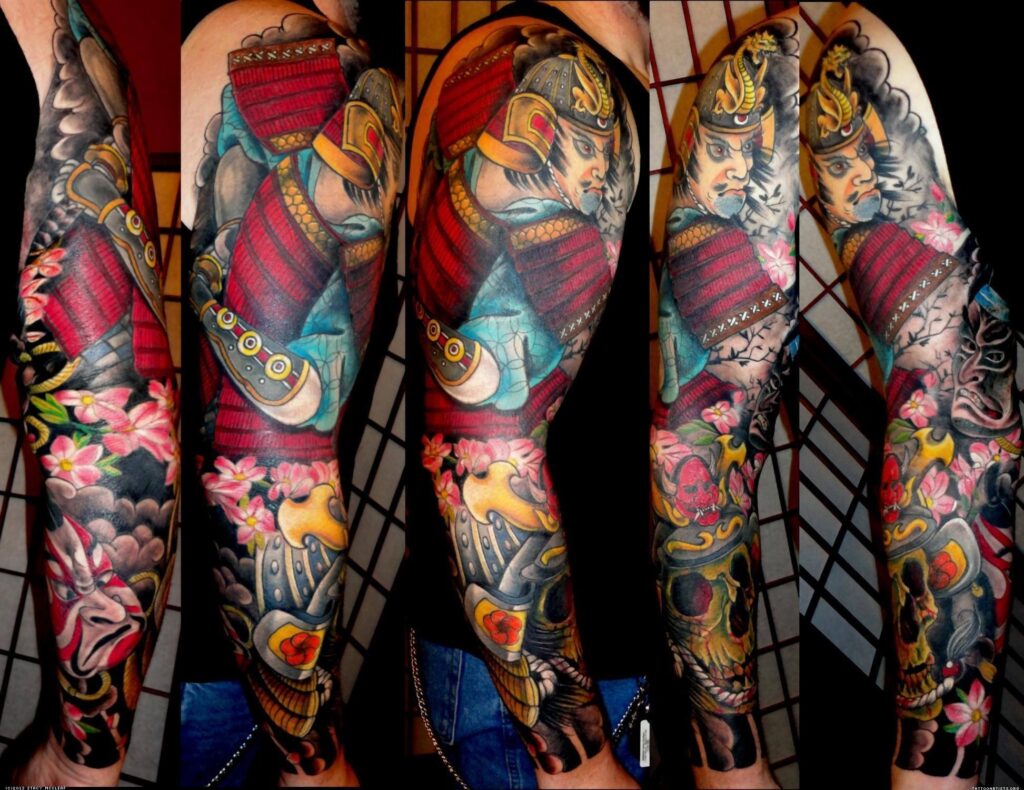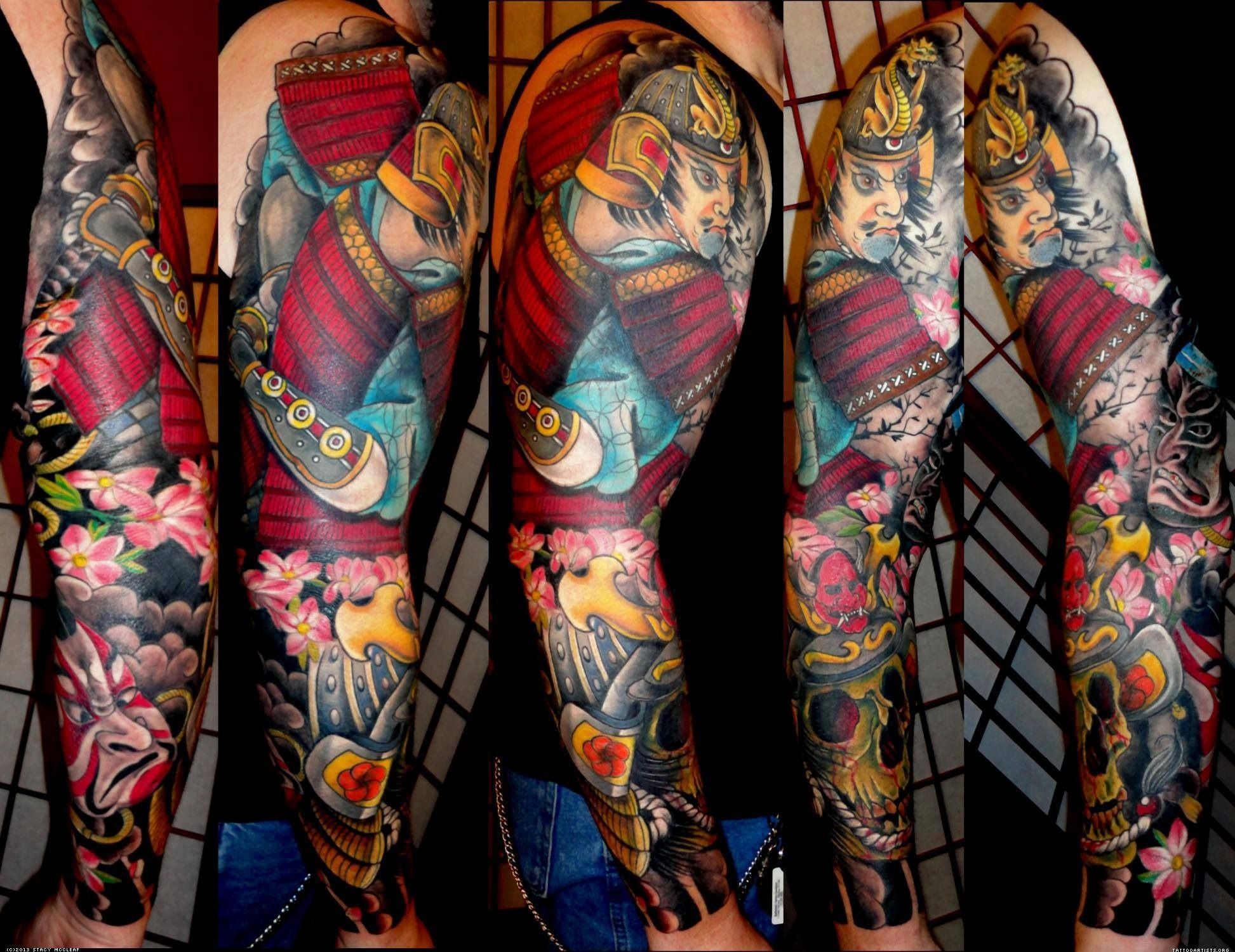
Japanese Style Tattoo Sleeves: A Comprehensive Guide to Irezumi Art
Japanese style tattoo sleeves, often referred to as Irezumi, represent a profound and intricate art form steeped in history, symbolism, and cultural significance. More than mere body art, these expansive tattoos tell stories, convey personal values, and serve as a visual representation of an individual’s identity. This comprehensive guide delves into the rich tapestry of Japanese tattoo sleeves, exploring their origins, common motifs, meanings, and considerations for those contemplating this commitment.
The History and Evolution of Irezumi
The history of Japanese tattoos stretches back millennia, with evidence suggesting their presence as early as the Jomon period (10,000 BCE – 300 BCE). Initially, tattoos served practical purposes, such as marking criminals or identifying members of specific groups. However, during the Edo period (1603-1868), Irezumi began its transformation into the elaborate art form we recognize today. Outlaws and members of the working class embraced tattoos as a form of rebellion and self-expression. The elaborate designs, often covering large portions of the body, became a symbol of courage, loyalty, and defiance.
The Meiji government, seeking to modernize Japan and align with Western standards, outlawed tattoos in 1872. This drove Irezumi underground, associating it further with the Yakuza (Japanese organized crime syndicates). While the ban was lifted in 1948, the stigma surrounding Japanese style tattoo sleeves persisted for decades, only recently beginning to fade as Japanese art and culture gain broader global acceptance.
Key Elements of Japanese Style Tattoo Sleeves
Several key elements define Japanese style tattoo sleeves, setting them apart from other tattoo styles:
- Large-Scale Designs: Irezumi is characterized by its expansive designs, often covering the entire arm, back, or leg. Sleeve tattoos are a common manifestation of this, extending from the shoulder to the wrist.
- Traditional Motifs: Specific imagery holds deep symbolic meaning. Dragons, koi fish, tigers, and mythical creatures are frequently incorporated, each carrying its own significance.
- Background Elements: Clouds, waves, and wind bars (kaze) are used to create depth, movement, and context within the design. These elements are not merely decorative; they contribute to the overall narrative.
- Bold Outlines: Strong, well-defined outlines are crucial in Japanese style tattoo sleeves. These outlines ensure the design’s longevity and clarity.
- Vibrant Colors: While black and grey Irezumi exists, vibrant colors are commonly used to enhance the visual impact and symbolic meaning of the tattoo.
Popular Motifs and Their Meanings
Understanding the symbolism behind common motifs is crucial for anyone considering a Japanese style tattoo sleeve. Here are some prevalent examples:
Dragons (Ryu)
Dragons are potent symbols of wisdom, strength, protection, and good fortune. They are often depicted with scales, claws, and horns, representing different aspects of their power. A dragon ascending symbolizes growth and progress, while a descending dragon represents the dispersal of knowledge and wisdom.
Koi Fish (Koi)
Koi fish symbolize perseverance, determination, and success. According to legend, koi that swim upstream and leap over waterfalls transform into dragons. The color of the koi can also influence its meaning; for example, a black koi represents overcoming adversity, while a red koi symbolizes love and passion.
Tigers (Tora)
Tigers represent courage, strength, and protection from evil spirits. They are often depicted in aggressive poses, symbolizing their power and ferocity. In Japanese mythology, the tiger is associated with the north and is believed to control the winds.
Phoenix (Ho-o)
The phoenix symbolizes rebirth, renewal, and immortality. It is a mythical bird that rises from the ashes, representing the cyclical nature of life. The phoenix is often paired with the dragon, representing yin and yang, or the balance of opposing forces.
Snakes (Hebi)
Snakes are symbols of protection, good luck, and wisdom. They are believed to ward off illness and misfortune. In some interpretations, snakes can also represent healing and transformation.
Flowers (Hana)
Flowers play a significant role in Japanese style tattoo sleeves, adding beauty and symbolic depth to the overall design. Different flowers carry different meanings:
- Cherry Blossoms (Sakura): Represent the transience of life and the beauty of impermanence.
- Peonies (Botan): Symbolize wealth, prosperity, and good fortune.
- Chrysanthemums (Kiku): Represent longevity, rejuvenation, and nobility.
- Lotus Flowers (Hasu): Symbolize purity, enlightenment, and spiritual awakening.
The Process of Getting a Japanese Style Tattoo Sleeve
Embarking on a Japanese style tattoo sleeve is a significant commitment, both in terms of time and money. Here’s a breakdown of the process:
Research and Consultation
The first step is to thoroughly research artists specializing in Irezumi. Look for artists with a strong portfolio showcasing their expertise in traditional Japanese techniques and designs. Schedule consultations with several artists to discuss your ideas, preferences, and budget. This is an opportunity to ask questions, assess their understanding of Japanese symbolism, and determine if their artistic style aligns with your vision.
Design Development
Once you’ve chosen an artist, the next step is to collaborate on the design. This involves discussing the specific motifs you want to include, the overall composition, and the desired color palette. Your artist will likely create a series of sketches or digital mock-ups to refine the design until you are completely satisfied. Be prepared to invest time and effort in this process, as the design will be on your body for life.
The Tattooing Sessions
Japanese style tattoo sleeves typically require multiple sessions to complete. The length of each session and the total number of sessions will depend on the size and complexity of the design. Traditional Irezumi is often done using tebori, a hand-poked method using non-electrical needles. While slower, many believe tebori creates a more nuanced and dynamic tattoo. Machine tattooing is also commonly used. Be prepared for discomfort during the sessions, and follow your artist’s aftercare instructions diligently to ensure proper healing. [See also: Tattoo Aftercare: A Complete Guide]
Considerations Before Getting a Japanese Style Tattoo Sleeve
Before committing to a Japanese style tattoo sleeve, consider the following:
- Cultural Appropriation: Be respectful of the cultural significance of Irezumi. Understand the meaning behind the motifs you choose and avoid appropriating designs without proper understanding or appreciation.
- Professional Implications: While societal perceptions are changing, some professions may still frown upon visible tattoos. Consider the potential impact on your career before getting a sleeve tattoo.
- Pain Tolerance: Sleeve tattoos cover a large area of skin and can be quite painful, especially in sensitive areas like the inner arm and elbow.
- Cost: Japanese style tattoo sleeves are a significant investment. Be prepared to pay a premium for a skilled artist and the time required to complete the tattoo.
- Artist Selection: Choosing the right artist is paramount. Look for someone with extensive experience in Irezumi and a deep understanding of Japanese symbolism. Check their portfolio carefully and read reviews from previous clients.
The Enduring Appeal of Japanese Style Tattoo Sleeves
Despite the challenges and considerations, Japanese style tattoo sleeves continue to captivate and inspire individuals around the world. Their enduring appeal lies in their beauty, symbolism, and the profound connection they represent to Japanese art and culture. A well-executed Irezumi sleeve is more than just a tattoo; it’s a work of art, a personal statement, and a testament to the enduring power of human expression. The intricate designs, vibrant colors, and rich symbolism create a visual narrative that speaks volumes about the wearer’s values, beliefs, and aspirations. Whether you are drawn to the strength of a dragon, the perseverance of a koi fish, or the beauty of a cherry blossom, a Japanese style tattoo sleeve can be a powerful and meaningful way to express your individuality and connect with a rich cultural heritage. So, if you are considering this art form, do your research, choose your artist wisely, and embrace the journey of creating a lasting masterpiece on your skin. The commitment is significant, but the reward – a stunning and deeply personal work of art – is well worth the effort. Remember to always prioritize respect for the culture and traditions that underpin Irezumi, ensuring that your Japanese style tattoo sleeve is not only beautiful but also a testament to your appreciation for this ancient and revered art form.
Ultimately, the decision to get a Japanese style tattoo sleeve is a personal one. By understanding the history, symbolism, and process involved, you can make an informed choice and embark on a journey to create a unique and meaningful work of art that will last a lifetime. [See also: Irezumi vs. Western Tattoos: Key Differences]

